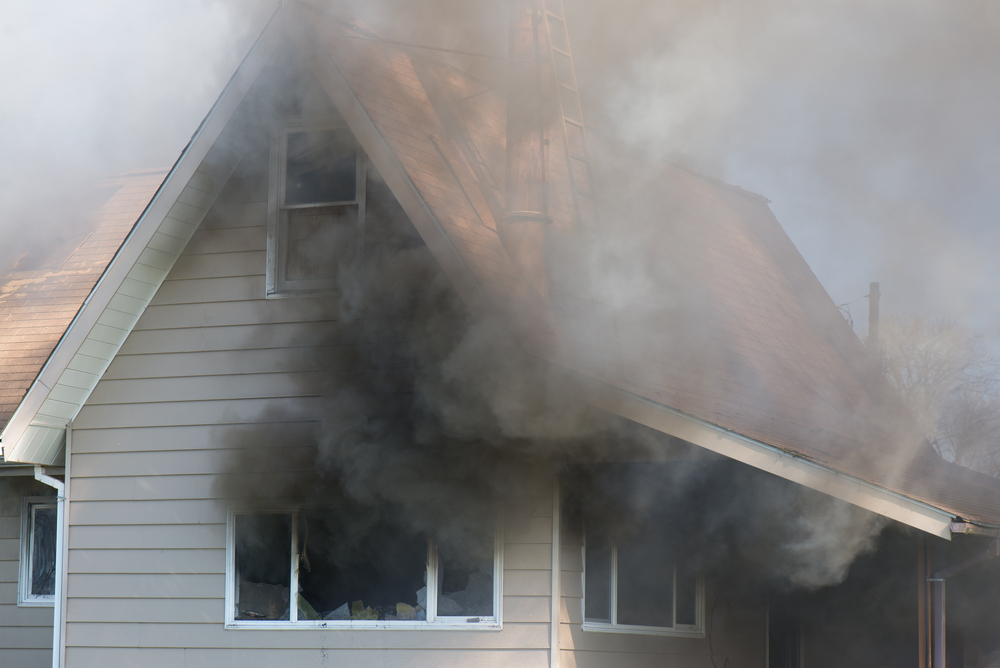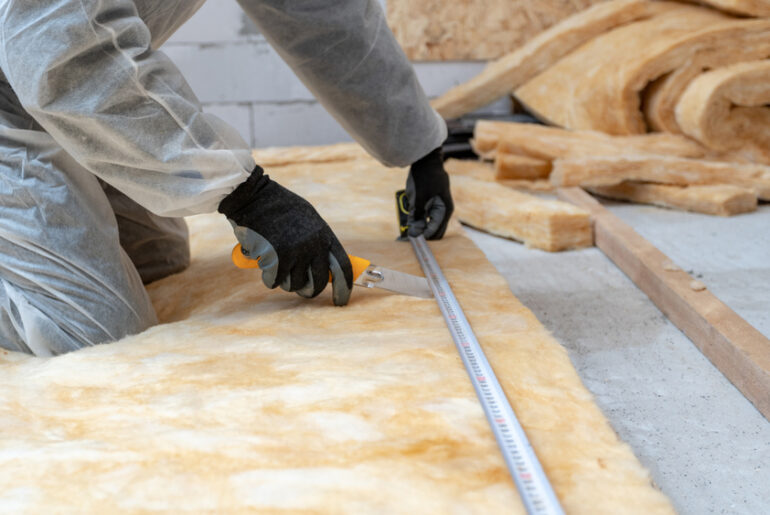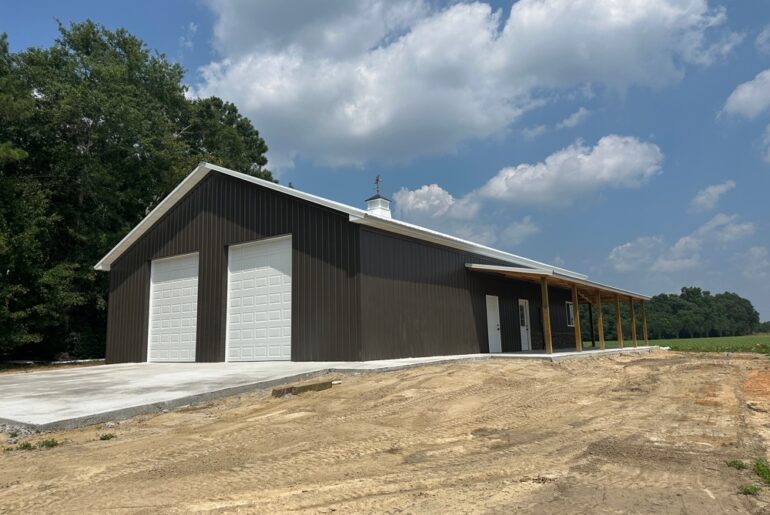Fire resistance is a primary consideration when you’re planning to install new fiberglass insulation or replace your existing one, as it will prevent putting your family and house at risk.
Fiberglass insulation is fire-resistant as it’s made from glass fibers that can withstand heat and resists burning to a certain degree. It can withstand up to 1000°F, and while it cannot catch fire, it can melt at about 2050°F.
That said, fiberglass insulation releases dangerous toxic fumes on burning. If you have a potential fire hazard at home, immediately contact the fire department and flee to safety.
If you wish to use fiberglass insulation, it’s important to know what makes fiberglass insulation fire-resistant and consider its potential fire hazards and risks that come with it.
In this article, we’ll take a closer look at what makes fiberglass insulation fire resistant, how it can impede a raging fire, and its potential hazards.
Fiberglass Is Fire-Resistant, Not Fireproof
Since fiberglass insulation is made from glass melted at high temperatures, spun into long fibers, and combined with plastic polymers, it’s naturally fire-resistant.
Although fiberglass insulation is fire-resistant, it’s not fireproof. A fire-resistant material is designed to withstand heat and resists burning to a certain degree without losing its features. It will also not contribute to the spread of fire. In contrast, a fireproof material is designed to resist fire completely and cannot be burned under any circumstances.
Fire class rating defines how long material can withstand a standard fire resistance test. It’s determined by the smoke produced and flame spread of the material. Fire ratings have five classes: Class A (best fire rating), Class B, Class C, Class D, and Class K (lowest fire rating).
The fire rating of fiberglass insulation falls under Class A fire rating, as it is noncombustible and cannot contribute to fire.
So Fiberglass Insulation Can Catch Fire?
Fiberglass insulation is nonflammable and non-combustible because it’s made from glass fibers. In addition, since fiberglass is non-combustible, it doesn’t need to be treated with fire retardants. Although fiberglass insulation doesn’t catch fire and burn easily, it often has facings or vapor retarders (usually made of paper and foil) that can catch fire.
Also, once the fiberglass melts, it can create a heat source and cause the attached facing to ignite, hence catching fire.
Unlike fiberglass, spray foam insulation is considered combustible as it can ignite at 700°F. However, fiberglass can melt more easily than mineral wool/Rockwool insulation, as it can withstand temperatures above 1832°F and will only melt at 2,200°F.
In addition, cellulose insulation can withstand 1,200°F, while vermiculite requires about 1,400°F to melt.
What Is The Ignition Temperature Of Fiberglass Insulation?
The ignition temperature is the minimum temperature of the material that takes fire in the air, causes combustion, and starts burning without help from any ignition source or external fire.
On average, the ignition temperature for fiberglass is around 1,112°F, which is close to how hot molten lava is, which ranges from 1,300 to 2,200 °F. However, this rate will also depend on the fiberglass insulation type and condition.
Does Fiberglass Burn Or Melt?
Fiberglass insulation is fire-resistant and cannot burn since it’s made from glass. However, it can melt once it reaches a high enough temperature. Fiberglass can withstand temperatures up to 1000°F and will only start to soften at 1500°F. Its ultimate melting point is when the temperature reaches 2050°F.
What Are The Dangers Of Burning Fiberglass?
Although fiberglass doesn’t easily melt, it releases toxic fumes of harmful gases like formaldehyde at the start of burning. Formaldehyde fumes have a pungent smell that can cause headaches and irritates the skin, eyes, nose, and throat for short periods of exposure.
Longer exposure can cause inflammation, coughing, choking, and aggravate chronic respiratory conditions like asthma and bronchitis. In addition, exposure to toxic fumes for prolonged periods can also cause severe damage to the respiratory system, such as throat swelling and chemical burns to the lungs that could even cause death. It can also cause adverse effects on the cardiovascular system.
Burning fiberglass can also send harmful particles into the air, such as boron and silica. Silica is categorized as a human lung carcinogen, a substance that promotes cancer formation. Inhaling large amounts of it can cause scarring and inflammation and potentially cause a long-term lung disease called silicosis.
Some fiberglass insulation types also contain boron, which can irritate the lungs, throat, nose, eyes, and skin. It can also affect the kidney, stomach, liver, and intestines over a short period of exposure.
Another danger to melting fiberglass is it increases the oxygen supply in the space, which can be a dangerous fire accelerant. It also turns the wall cavities into a convection chamber that pumps oxygen to the fire. In addition, it can spread heat to other flammable materials like wooden frames, causing the materials to ignite. It risks the damage and failure of the building’s structural elements, as melting fiberglass exposes the structure to fire.
Multiple fire resistance tests and demonstrations showed that the ceiling of the fiberglass-insulated building collapsed after 20 minutes and completely burned to the ground after two hours. In contrast, other insulation materials like cellulose lasted longer.
Another danger of burning fiberglass is visibility reduction as it smokes. The smoke produced can often hinder the occupants of the building from escaping and prolong their exposure to the toxic fumes and heat produced by the fire. It can also cause suffocation because of the trapped toxic fumes, especially when the burning insulation is in a poorly ventilated area.
Can You Put Out A Burning Fiberglass Insulation Yourself?
Since burning or melting fiberglass can be highly hazardous to one’s health, especially when exposed for long periods, it’s best to call firefighters and let the professionals handle the burning fiberglass insulation instead. The fumes and smoke can also reduce visibility, which could impede the process and be difficult, especially if inexperienced.
In addition, immediately evacuating when the fiberglass insulation is burning is preferred to prevent any fatal circumstances.
How to Prevent Fiberglass Insulation From Burning?
It’s important to use renowned, high-quality fiberglass insulation products that meet all safety regulations to reduce the risk of fiberglass insulation burning. In addition, ensure the fiberglass you’re using is rated as non-flammable and non-combustible.
Following local building codes is also crucial to ensure safety. Since improperly installed fiberglass insulation is a dangerous fire hazard, a licensed professional contractor handling and installing the insulation can also minimize fire risk.
Another precaution to take is always to check the electrical wiring for any damage, especially in the area where you installed insulation. Check for frayed or worn wires and discontinue if you see any damage. Faulty wiring and damaged or defective components may result in sparking, which can ignite the combustible facing attached.
In addition, it’s best to keep your fiberglass insulation away from ignition or heat sources, such as furniture, open flames, appliances, and light bulbs. Also, keep the insulation away from combustible material, such as oil, gas, wood, paper, or cotton batting.
Another standard precaution is ensuring all space heaters are working properly, as faulty space heaters risk triggering a fire. To prevent overheating, maintain at least 3 feet of space and remove flammable materials like bedding, curtains, and clothing. It’s also important to place the space heater on an even or leveled ground. At the same time, regular cleaning and maintenance of the air filters will prevent overheating.
Preventing water leaks is crucial as water dripping onto an exposed wire can cause a short circuit and ignite a fire. The leaks can also seep through the wall cavity, especially in attics, which can cause a constant heat source that could cause fiberglass facing to ignite and burn.
Lastly, the ever-important tip is to ensure you have installed and working smoke detectors in any home space, especially where fiberglass insulation is installed. It will act as the first line of defense against fire.
What Types of Insulation Are Fireproof?
Contrary to popular belief, cellulose insulation is fire-resistant and has better flame resistance than fiberglass. Cellulose insulation is Class 1 Fire rating, which is the best among the fire class ratings. It has a flame spread of 25 and a smoke development of 50 or less. It can also withstand high temperatures of about 1,200°F.
Another fire-resistant insulation material is mineral wool/rock wool insulation. It’s made of mineral rock, which is naturally a non-combustible material. Mineral wool insulation can withstand temperatures above 1832°F and only melts at 2,200°F.
Sources:
- US Energy Department at energy.gov
- cellulose.org
- houleinsulation.com/fire.html





